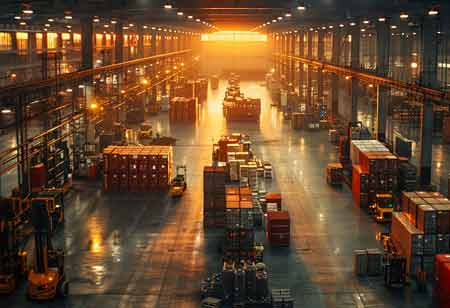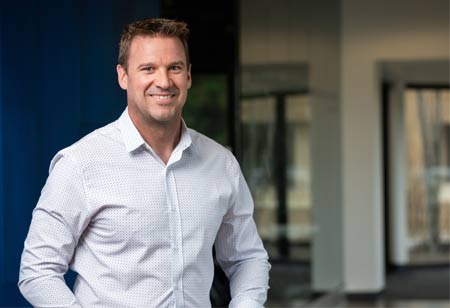THANK YOU FOR SUBSCRIBING

Invisible Builders: Why Accessibility and Wellbeing Should Be the Heart of the Construction Site Culture
Deniz Kayimbasioglu, Senior Design Manager, Overbury

 Deniz Kayimbasioglu, Senior Design Manager, Overbury
Deniz Kayimbasioglu, Senior Design Manager, OverburyDeniz Kayimbasioglu is a Senior Design Manager at Overbury, bringing an architectural background and over seven years of experience as an Architectural Assistant and Interior Designer. At Overbury, Deniz oversees design management for major projects, ensuring high standards and effective collaboration between design teams, contractors, and clients, while also focusing on innovative site set-ups and design integrity.
While delivering incredible, awe-inspiring schemes of architectural and interior design practices, what we often see is that the environments construction operatives work in are far from the final products they achieve through blood, sweat and tears.
There are stringent regulations that architects must adhere to while designing inclusive and wellbeing-oriented workplaces such as Approved Document M. But there is a big blind spot when it comes to providing similar accommodations to the construction workers – with regulations of temporary site set ups primarily focusing on accessibility as a safety issue rather than also focusing on dignity. I am not denying the existence of the Construction (Design and Management) Regulations 2015; however, this is purely around safe access and egress of the workers and is solely concentrating on safety rather than inclusive design. There is no requirement that mandates a site set-up to make allowances for disabilities. There is arguably the Equality Act 2010 to refer to, however, where an invisible disability is concerned, this will require the employee to come forward putting the onus and the pressure of revealing themselves on to the employee.
“I think the world of construction should start working hand in hand - clients, the authorities, designers, main contractors and the subcontractors - to ensure that the site set-up conditions created for the construction workers match what is provided for the end users.”
I do not think the industry has taken full stock of the impact an aging population will have on the available skilled workforce. The retirement age is now 68 in the UK with speculations growing that it might be increased to 74. Many skilled workers are having to retire early due to the physical strain construction work puts on them. Considering the highly physically demanding nature of the work done in construction it is not unreasonable to expect that physical health of construction workers might be affected. A report by CITB called Fuller Working Lives in Construction dated October 2018 states that a staggering 46 percent of men aged 50 to 54 said to have left construction due to ill health - looking for less strenuous employment or potentially having to retire at least 14 years before their pension payments kick in.
A lot of the work carried out by the trades will require an “able” body, there is a lack of acknowledgement of neurodiversity and disability within the construction industry.
When it comes to the tools used, there are some great innovations now being used on sites to reduce manual handling, minimise exposure to vibrations and exposure to dust and chemicals. On high profile projects, thanks to sustainability and wellbeing related accreditation requirements such as BREEAM, LEED, SKA and WELL, there is a reduction of use of Volatile Organic Compound emitting materials and initiatives like cleaning and maintenance of ductworks during the construction phase, however these are all done focusing on the end user rather than the workers building the project.
There has been a welcome push recently to allow spaces such as neurodiverse rooms on construction sites, though arguably these can make the users of these spaces feel like they are signposting themselves as different. Accreditations that office building owners can chase like health and wellbeing oriented WELL have brought a lot of understanding to architectural and interior designers with regards to requirement of different work settings such as quite spaces, collaboration areas and lone working, however, these have not necessarily made it to the construction site set-ups yet.
In my experience, Overbury ensures that design managers with architectural and interior design experience are consulted in order to create optimum work conditions at our site set-ups. In the past I have seen site set-ups designed with rows and rows of desks reminding one of a stuffed sardine can, with lack of consideration towards ergonomics and inclusive design, inadequate lighting and minimal consideration towards thermal comfort and air quality. The introduction of different work settings would allow the users the choice and control over the work environment that work best for their requirements, giving flexibility to neurodiverse individuals to feel comfortable in their work atmosphere.
A lot of corporate businesses chase creating highly inclusive and wellbeing enhancing work atmospheres to retain and attract the biggest talent within their market, when it comes to the construction of such spaces, construction workers haven’t previously had access to the same environment and find themselves having to use back entrances in the pursuit of making them “invisible” to the other users of the building. I remember in such an instance having to climb 5 floors to go down 2 to reach our site set-up in a multi-tenant building.
I think the world of construction should start working hand in hand - clients, the authorities, designers, main contractors, and the subcontractors - to ensure that the site set-up conditions created for the construction workers match what is provided for the end users. Once the industry acknowledges the value in this approach and start working together as one with builders in mind, we will keep seeing workspaces that elevate wellbeing which further support and Deniz Kayimbasioglu uplift the hands that laid the foundations.
Read Also
Development of the Logistics Warehousing Market in Brazil
Driving Innovation and Preserving Tradition
Operational Leadership VS Field Leadership in the Utility Construction Business
People-First Innovation: Developing Virtual Design and Construction (VDC) Training Programs to Empower Field Team Members
Sustainable Projects: Aligning Business and Purpose in Latin America
Engage Smarter: Why Constraints Matter More Than Hazards

 Copyright © 2025 All Rights Reserved | by:
Copyright © 2025 All Rights Reserved | by: Construction Tech Review
| Subscribe | About us | Sitemap| Editorial Policy| Feedback Policy














